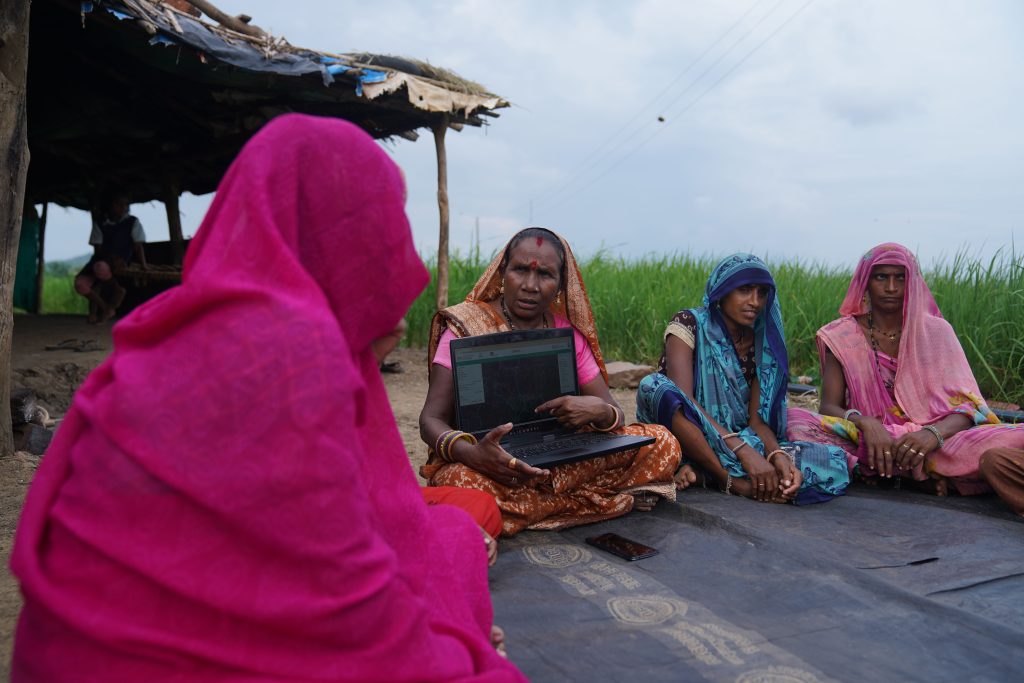Principle 4 of the Getting Ahead of Disasters Charter focuses on improving delivery systems so “the most at-risk communities and most marginalised people…get timely support before, during and after disasters”. Social protection can be a powerful delivery system, and the International Institute for Environment and Development (IIED) is a thought leader in using it to respond to climate hazards. This case study explores two important social protection initiatives of IIED—the Anticipatory Social Protection Index for Resilience (ASPIRE)[1] and the Climate Resilience Information System and Planning Tool for MGNREGS (CRISP-M)[2]—and how they support social protection for local communities.

ASPIRE is a diagnostic tool that has been deployed across several countries[3] to evaluate their readiness and effectiveness in delivering anticipatory and shock-responsive social protection. CRISP-M, launched in India, is a web and mobile phone-based tool that helps communities make climate-smart decisions by providing them with timely information in ways that they understand—and trust. Through different approaches, the two initiatives address the impacts of climate change on vulnerable communities, particularly women, marginalized groups, and those dependent on agriculture. These populations face increased food insecurity, poverty, and migration due to erratic weather patterns such as unpredictable rainfall and prolonged droughts. Insufficient localized climate data, limited access to decision-making platforms, and entrenched social inequalities exacerbate their vulnerability. Traditional social protection systems often fail to incorporate climate risk data or respond proactively, ahead of disasters, but ASPIRE and CRISP-M tackle these gaps by integrating climate resilience into social protection decision-making, empowering communities to manage climate risks, and fostering gender and social inclusion.
These tools have improved communities’ ability to anticipate climate shocks, implement effective resource management, and advocate for sustainable climate adaptation projects. Partnerships with local governments, NGOs, and community volunteers have been instrumental in scaling these efforts across multiple regions. For example, CRISP-M has significantly increased community participation in climate adaptation efforts, especially among women and marginalized groups. Improved access to climate data empowers farmers to plan for extreme weather events, and the success of the “Climate Saathis”, local volunteers who act as CRISP-M experts, means that the community feels ownership over their own climate action. CRISP-M has also improved transparency and accountability in social protection programs by incorporating crowdsourced data from the community. Farmers in Madhya Pradesh use the tool to verify claims on project progress and monitor the status of water conservation assets so they can report incomplete or faulty structures. This results in more equitable benefit sharing and increased trust between communities and local governments. The importance of the success factors cannot be overstated: greater agricultural productivity, reduced reliance on exploitative labour practices, and improved gender representation in decision-making platforms.
ASPIRE and CRISP-M are excellent examples of how a single Charter principle can be implemented. By applying an ASPIRE diagnostic to a country’s social protection system, we uncover valuable insights into how social protection programmes can be tailored to meet diverse climate risks and vulnerabilities—based on existing strengths and areas where more investment is required. The goal is to strengthen a country against climate risks by enhancing its readiness, filling policy and system gaps, and successfully incorporating insurance-linked anticipatory payout mechanisms.
CRISP-M, meanwhile, integrates risk information into decision-making at the local level, and is paired with existing social protection systems[4] so that pre-arranged finance can be delivered to vulnerable populations before climate shocks occur.[5] The focus on community-led decision-making and empowering local actors ensures that the approach prioritizes local leadership, supporting the most marginalized populations. This strengthens sustainability and resilience against future climate-related disasters.
Social protection systems are in place in almost all countries but do not cover everyone and are rarely climate-ready. IIED will scale up anticipatory social protection mechanisms, expand coverage where it doesn’t exist, and fully integrate gender and inclusion into climate resilience efforts. ASPIRE and CRISP-M will be deployed in more countries based on collaboration with international stakeholders that ensures sustainable financing for long-term change. Improved and anticipatory social protection systems will build resilient communities capable of withstanding climate shocks, reduce poverty, and empower marginalized groups to participate in governance processes—all in line with the Charter. This ambition is underpinned by a mission to create a model for inclusive climate adaptation that can be replicated across diverse settings.
[1] IIED | Anticipatory Social Protection Index for Resilience — ASPIRE
[2] IIED | Enhancing climate resilience impacts of India’s social protection programme
[3] IIED | Delivering anticipatory social protection: country readiness assessment: covers Bangladesh, Ethiopia, Ghana, India, Malawi, Pakistan, Senegal, Uganda
[4] The Mahatma Gandhi National Rural Employment Guarantee Scheme (MGNREGS) is India’s largest social protection programme. It entitles every rural household to 100 days of guaranteed wage employment per year to meet consumption gaps during shocks.
[5] In the event of a severe drought, MGNREGS can provide an additional 50 days of employment.

